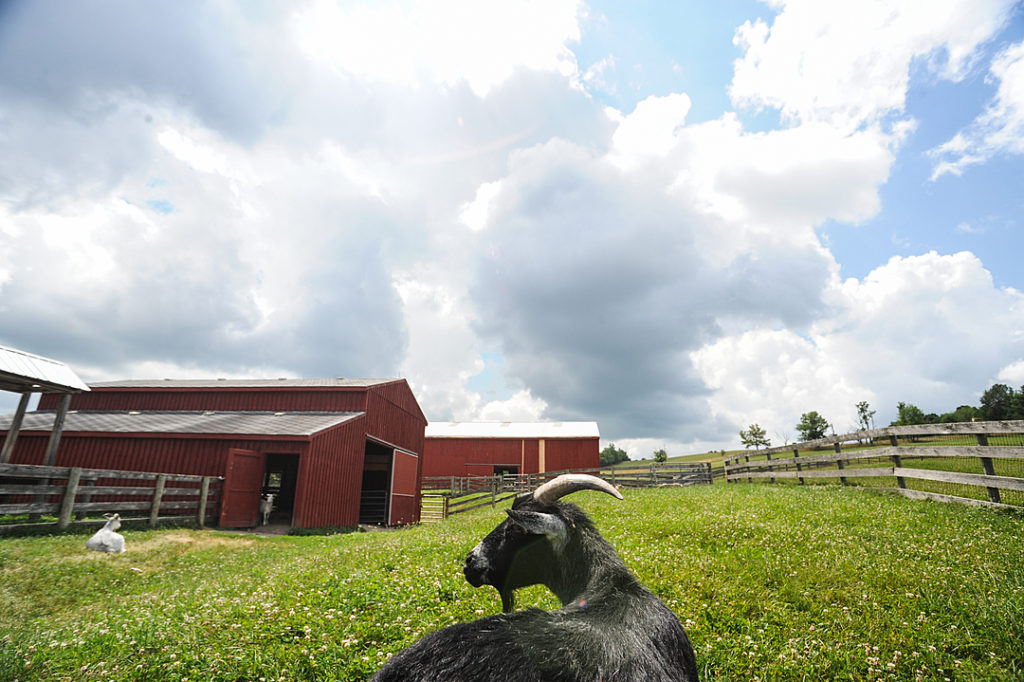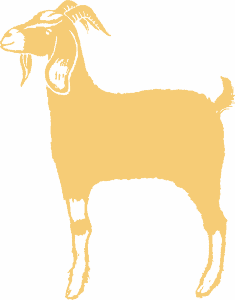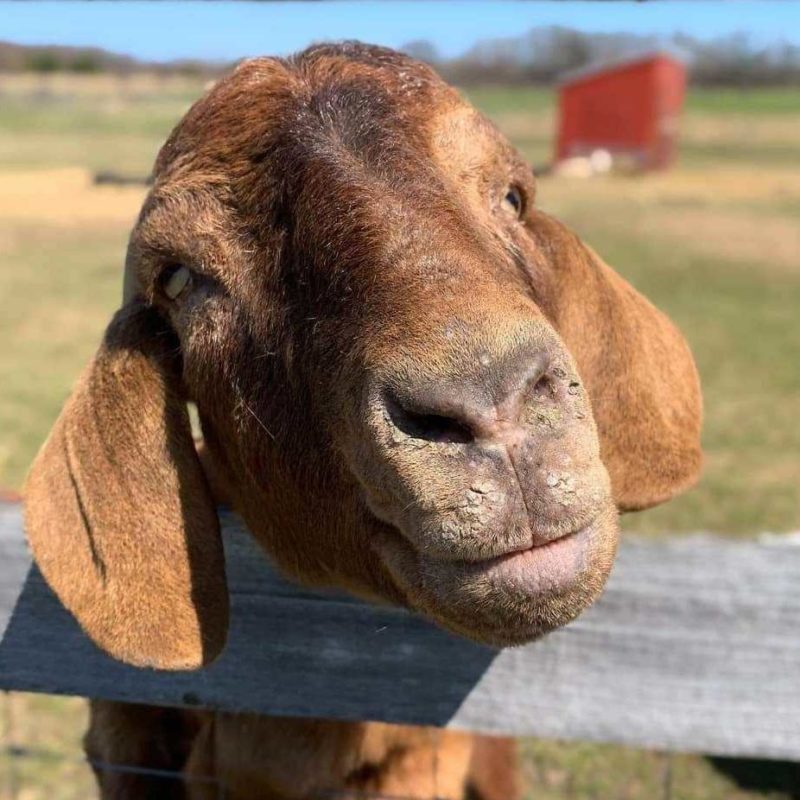
Check Out Our Course On Basic Sheep And Goat Care!
The following is an excerpt from Basic Sheep And Goat Care Part 1, one of the free course offerings available at our Compassionate Care Classroom. We hope you’ll check out the course, but given the important role fencing plays in sheep and goat housing, we want to ensure this information is easily accessible to anyone looking for it by offering this stand-alone resource.
Proper fencing is a critical component of outdoor living spaces. It’s also an expensive component. If you are hoping to save money by doing the job yourself, you MUST ensure you know how to properly install the fence and understand the critical principles involved – there’s much more to it than looking at a few examples and simply trying to recreate it.
When deciding whether or not to hire a professional or do it yourself, keep in mind that while you will save on installation costs by doing it yourself, if you don’t already have the necessary tools, you’ll need to invest in them. Also, consider the amount of time the project will take (likely three times as long as you planned!). In the long run, hiring a professional may be the best option. If you choose to do it yourself, just make sure you really know what you are doing so you can avoid the massive headache of saving money upfront but then finding that the fence is not secure.
Getting Started
Whether you hire someone or do it yourself, when thinking about fencing for your sheep or goat residents, you must consider what is needed to keep your residents safely inside their living spaceThe indoor or outdoor area where an animal resident lives, eats, and rests. and also what is necessary to protect them from predators. Start by asking yourself the following:
- How strong does the fence need to be to keep residents inside? What activities does it need to withstand?
- How tall does the fence need to be to keep residents inside their living space?
- What predators are in the area, and how can they be prevented or deterred from entering sheep and goat living spaces?
Let’s look at the first two questions as they apply specifically to sheep and goats since those can be answered a bit more generally than the last question, which will vary depending on what other species call your area home. However, keep in mind that when thinking about fencing strength and height, you’ll also need to consider what is necessary for predator protection.
Strength
In terms of strength and the activities the fence needs to be able to withstand, there are some general things to keep in mind, but a lot will also depend on the individuals being cared for. There is obviously going to be a difference between the strain of a 50lb Pygmy goat rubbing against a fence versus a 250lb Suffolk sheep rubbing against a fence. That said, generally speaking, goats have a reputation for being harder on fencing than sheep (remember, in this course, we are working under the assumption that residents have been neutered, so we aren’t factoring intact rams into that statement).
Fencing must be strong enough to withstand sheep and goats rubbing, scratching, and leaning on the fence. It also needs to withstand residents headbutting the fence, which is especially common with goats (and even more so if the fence separates different groups of goats). An additional consideration for goats: fencing needs to remain upright and secure when goats use it as a support while standing on their hind legs (which they may do in order to reach something or say “hello” over the fence).
Height
If you are considering fence height solely from the perspective of what is necessary to keep residents in, there is again some variation between sheep and goats and also between different breeds of goats. While a 4-foot fence may be enough to keep sheep and smaller goats inside their living space, some goats may be able to jump over this and require fencing that is 5 feet tall. When arranging the space or deciding where fence lines should be, be on the lookout for elements that could help goats climb or jump out of the living space. Even a 5-foot fence might not be able to keep residents inside if they have something to climb on near the fence.
Fencing For Fearful Individuals
It’s important to note that individuals who are fearful or stressed may shock you with their jumping abilities, particularly if they feel trapped. Keep this in mind, especially when designing quarantine spaces for new sheep and goats, as these individuals may be very fearful of humans when they arrive.

Predator Considerations
While different individuals may require stronger or taller fencing than others, the main point of variation when it comes to fencing is going to be based on predator considerations. For example, if you are in an area where coyotes are not only prevalent but also where conditions have made food for them scarce, you are likely going to need different fencing than someone who lives in an area where coyotes are rarely seen near human activity and where food sources are plentiful. Depending on the predators in your area and how likely they are to enter your residents’ outdoor spaces, you may need fencing that is not only significantly taller but also buried and designed to deter predators from climbing over it (perhaps with the addition of rollers). Additionally, in some areas, residents may need to be closed into their indoor spaces overnight in order to ensure their safety. Please note that lambs and kids are especially vulnerable to predators. They should be closed into safe spaces overnight and may also need to be supervised while outside during the day. Smaller breeds may also need additional protections.
Materials
A Warning About Fencing Recommendations!
Before we get into the type of fencing and materials we recommend, it’s worth noting that it is not at all uncommon to get very different recommendations from farm supply store staff, who may point you in the direction of cheaper materials or insist that you don’t need the robust fencing we recommend. While some alternatives may cost less money upfront, they simply won’t last, costing you time and money later on. Additionally, cheaper materials may put your residents at risk. We understand the desire to save money, but when it comes to proper fencing, it’s well worth investing in the proper materials and installation process upfront.
As you can see, like other topics we’ve covered, the best option for your residents will depend on factors specific to your residents and your sanctuary. However, we can make some general recommendations, especially in regard to what is necessary to prevent residents from venturing out of their living space. For both sheep and goats, we recommend using 12 gauge galvanized woven wire non-climb fencing with 2×4 inch openings. To further explain this recommendation, let’s look at it more closely:
- Gauge– We recommend 12 gauge over the cheaper 14 gauge for its strength. 14 gauge mesh has been known to tear while being tightened, so it’s no match for sheep or goat residents. Please note, this gauge recommendation is only regarding the mesh fencing, not the wire used for braces, which requires a different gauge (dependent on the type of brace, but typically 9 gauge).
- Galvanized vs. non-galvanized– Galvanized mesh might cost more, but it is far superior to non-galvanized mesh and will resist rust much longer.
- Woven vs. welded- We recommend woven over welded because welded fencing is more likely to pop if pressure is applied, whereas woven wire has a little bit of flexibility (even when pulled tight).
- 2×4 inch openings- We recommend the 2×4 inch openings over larger openings (4×4 openings are a common recommendation among the farming community for sheep and goats) because larger openings (including 4×4) carry the risk of residents, particularly those with horns, getting their head caught in the fence, which is a serious safety hazard that can result in injury or even death. While 4×4 fencing may work for some, given the potential risks, we prefer instead to guide folks towards the smaller 2×4 openings.
Fence Posts
Woven wire, non-climb fencing can be used with wood posts and metal t-posts. While it is possible to use 2 metal t-posts for every 1 wood post, this will not be nearly as secure as if all posts were wood. Additionally, even if you use a mix of wood posts and metal t-posts, ends and corners must have proper wood braces, or the fence is not going to remain standing for very long (be sure to check out the video on fence bracing linked below for more information on this very important topic). For some residents, a mix of wood and metal t-posts may work fine, but properly installed wood posts will make the fence more secure. Remember, the fence needs to be strong enough to withstand normal resident activity. T- posts may bend or become loose as residents repeatedly rub against or lean on the fence. Additionally, if residents headbutt the fence, they may break, bend, or dislodge t-posts.
For fencing that separates groups of goats, t-posts may not be strong enough to withstand repeated slamming. Also, keep in mind that if there is a chance the outdoor space will be used for other species at some point, or if you expand in the future and the fence line becomes a shared fence for another species, a t-post fence may not be appropriate or strong enough to safely secure larger residents (such as pigs, cows, or horses). While more expensive, wood post fencing will be stronger and allow for more flexibility in terms of how outdoor living spaces can be used. Wood posts as small as 5 inches in diameter can be used as line posts, but upright brace posts need to be at least 6 inches in diameter.
Boards
Fencing for goats also needs to be able to withstand residents using it as a support for their front legs while standing on their back legs. Not only might t-posts not be able to withstand this pressure, but non-climb fencing used without wood boards is also likely to bend and could be crushed down so that it is no longer as tall as it was, making it possible for residents to jump or climb over it. Adding a wooden board at the top of the fence can prevent this from happening.

Fences that separate different groups of goats may need 3-4 horizontal boards rather than just a top board. The wood boards help protect the non-climb fencing from damage (and help keep residents contained if the non-climb fence develops a breach), and the non-climb fencing covers gaps between wood boards where a horn, head, or limb could get caught (depending on the size of the gap) and can also protect boards from being knocked loose if they are repeatedly hit from behind.
A Note About Pressure Treated Wood
Pressure-treated wood is often recommended for fencing because of its durability in outdoor conditions, but be aware that some pressure-treating methods could put your residents at risk. When considering pressure-treated wood for resident fencing, avoid lumber that has been treated with arsenic preservatives such as CCA (chromate copper arsenate). If you have older fencing on your property, be aware that in addition to CCA, other harmful substances, such as kerosene and creosote, were once used to treat wood. To err on the side of caution, we’d recommend taking steps to ensure residents cannot lick or chew on wood fencing that has an unknown history. In order to ensure resident safety, some folks choose to use non-treated wood instead, opting for wood that is naturally rot-resistant.
Gates
Just as indoors, be sure to use heavy-duty gates that can withstand both resident activity and the elements.

Other Fencing Resources
For more information on some of the important principles of fence installations, check out our video resources about fence staples and fence bracing.
Article Acknowledgment
Our deepest gratitude to Michael Sizer for his help creating this portion of Basic Sheep And Goat Care Part 1.








